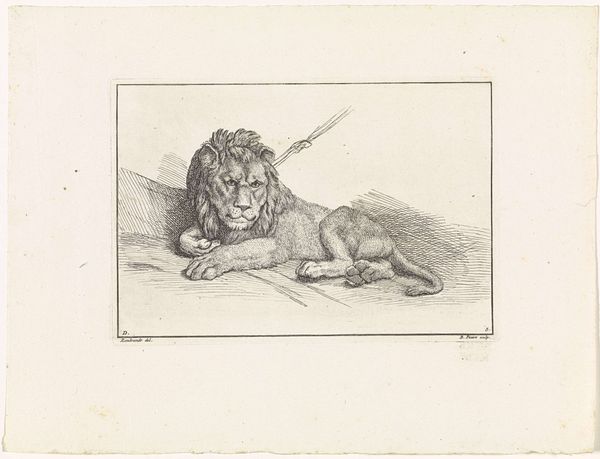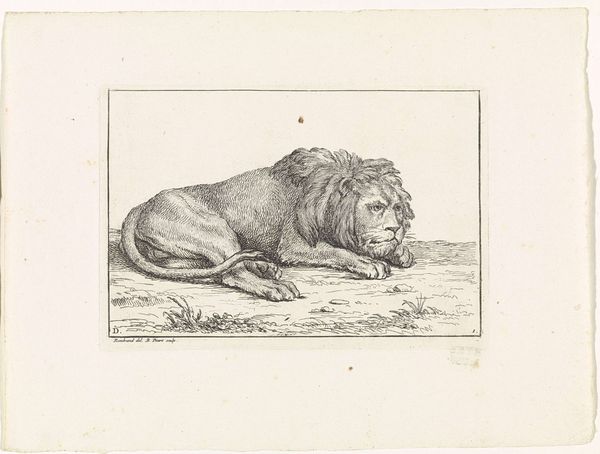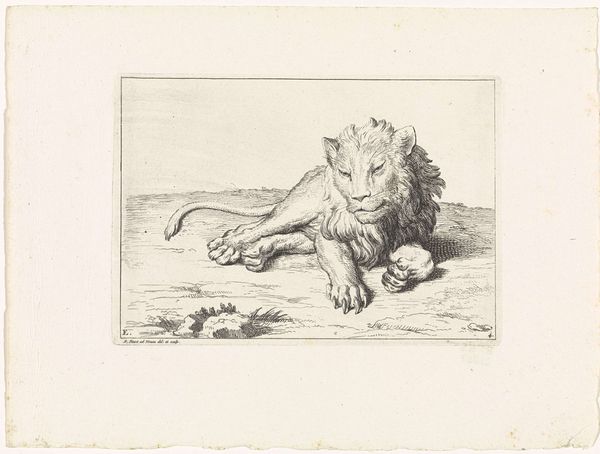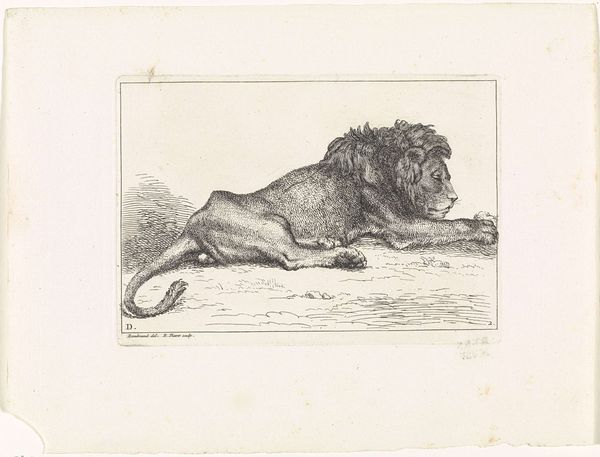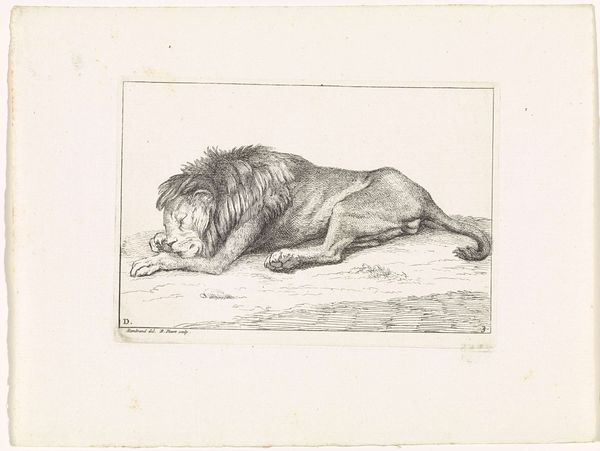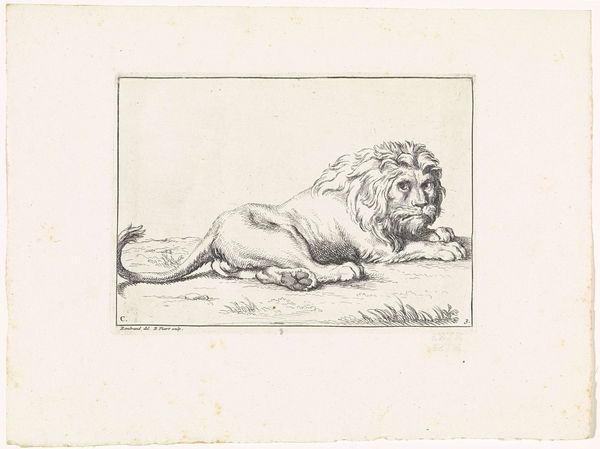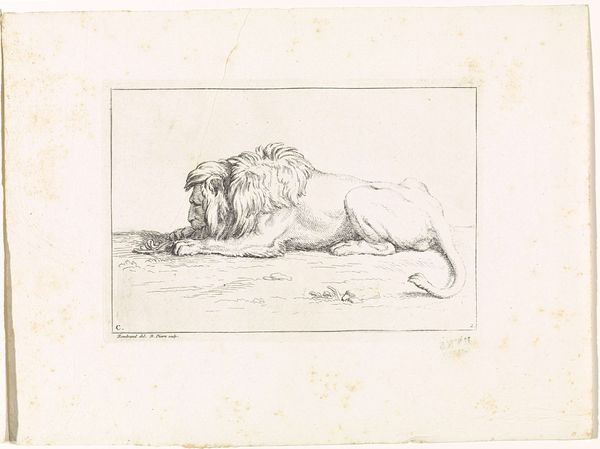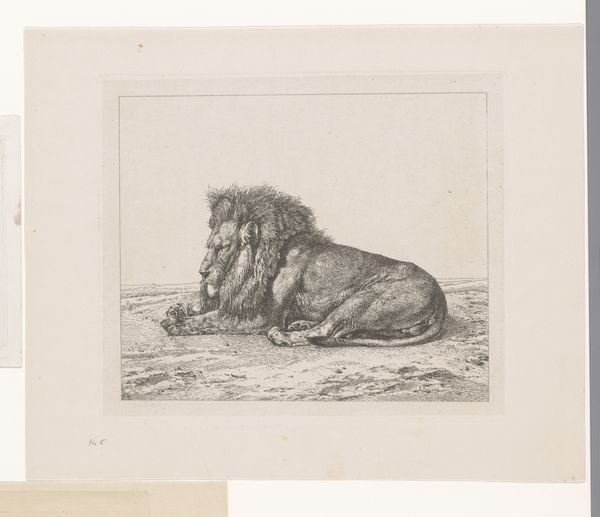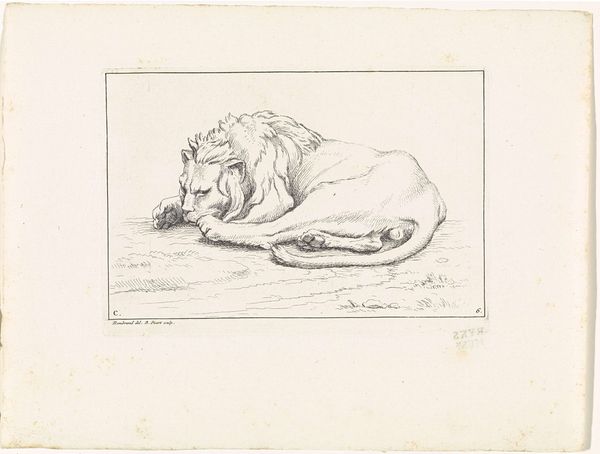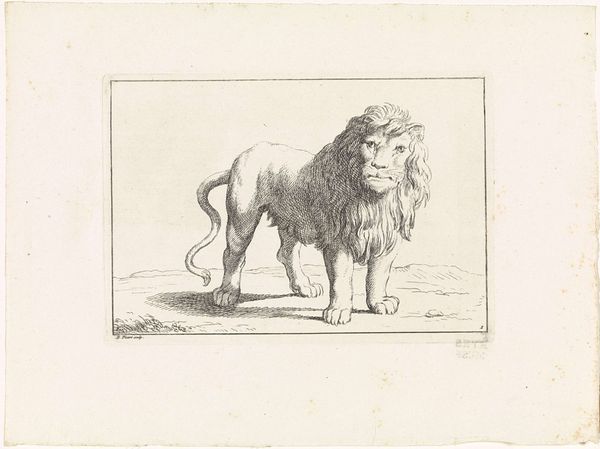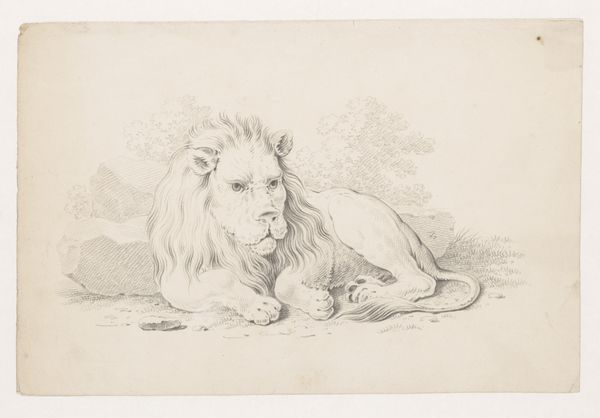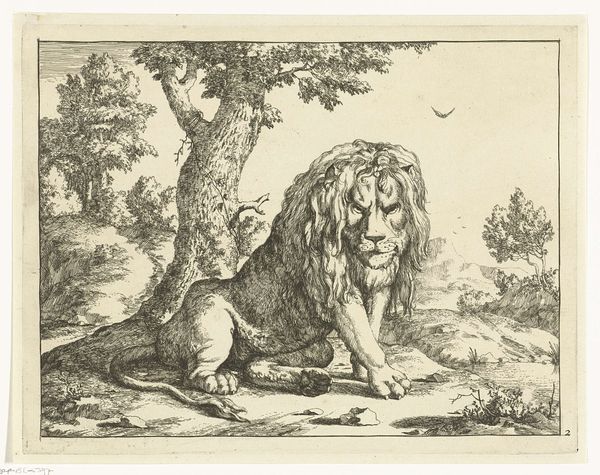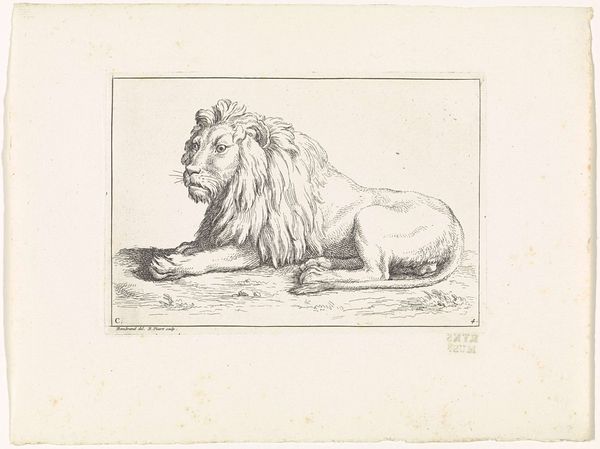
drawing, print, etching
#
drawing
# print
#
etching
#
landscape
#
figuration
#
line
#
realism
Dimensions: height 123 mm, width 176 mm
Copyright: Rijks Museum: Open Domain
Editor: We’re looking at "Landscape with Young Lion" etched by Bernard Picart in 1729. It's a fairly simple print; a lion is relaxing in what looks like a field. The line work is precise but gives off a slightly unsettling vibe, maybe because it’s an idealized animal in a very mundane setting. What stands out to you? Curator: What I find compelling is Picart's engagement with both artistic tradition and the burgeoning scientific observation of the natural world. Think about the etching process itself – the laborious and meticulous work of incising lines into a metal plate. It's a technology allowing for the mass production and dissemination of images. But what kind of labor goes into crafting ideas around animals? Editor: That’s a good point, what was that labor like? Curator: Exactly! And who was consuming these images? This wasn't just about high art. Prints like these fueled a growing interest in natural history, informing the public’s understanding and perception of exotic creatures. Picart, by employing etching, made the spectacle of a lion accessible. What does accessibility do for the context around depictions like this? Editor: I never considered the printmaking process in that light – seeing it as a means of distributing both information and a specific vision of nature controlled by the materials available to them. Curator: Precisely. The choices made, from subject matter to the method of reproduction, reflect the socio-economic conditions and intellectual currents of the time. Thinking about these choices transforms how we perceive the image, beyond just aesthetics. Editor: So, this lion tells a story, not just of an animal, but also about 18th-century production, labor, and even marketing, in a way! Thanks, that gave me a lot to think about. Curator: My pleasure, understanding how art is made helps to understand its many other meanings.
Comments
No comments
Be the first to comment and join the conversation on the ultimate creative platform.
